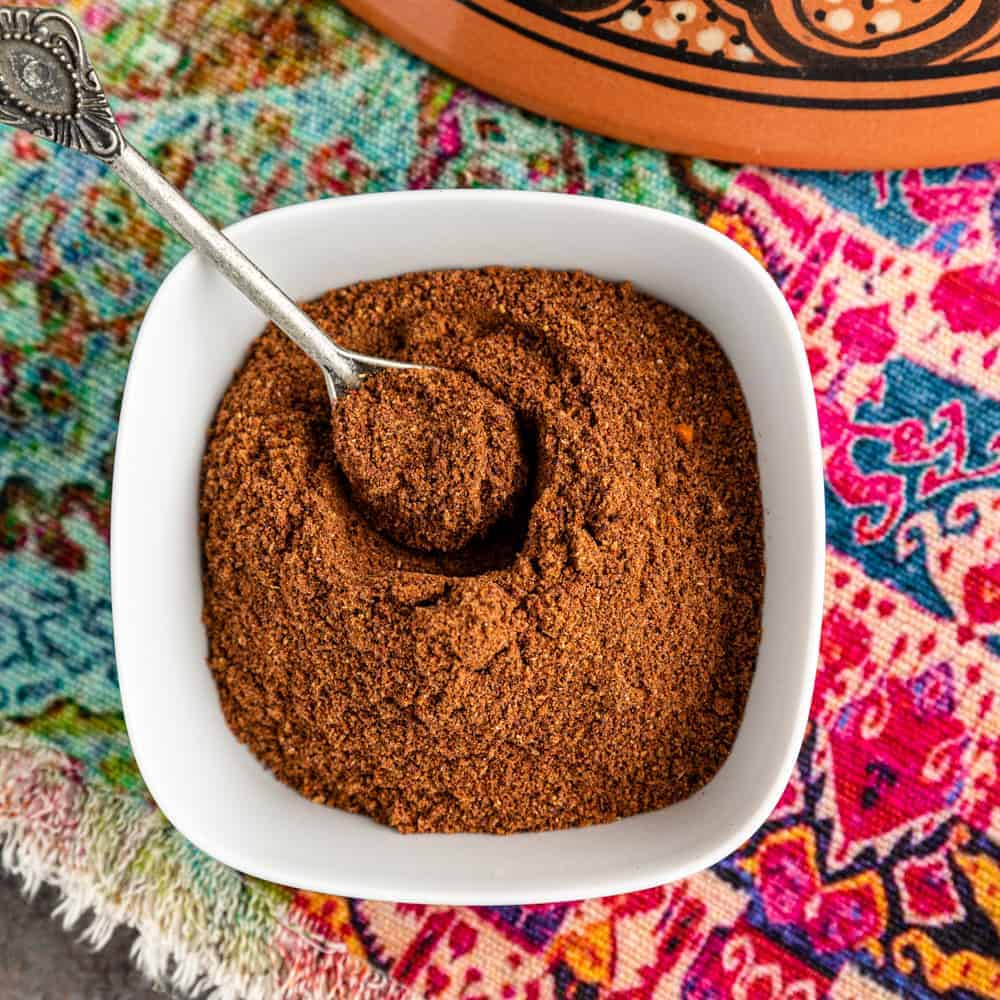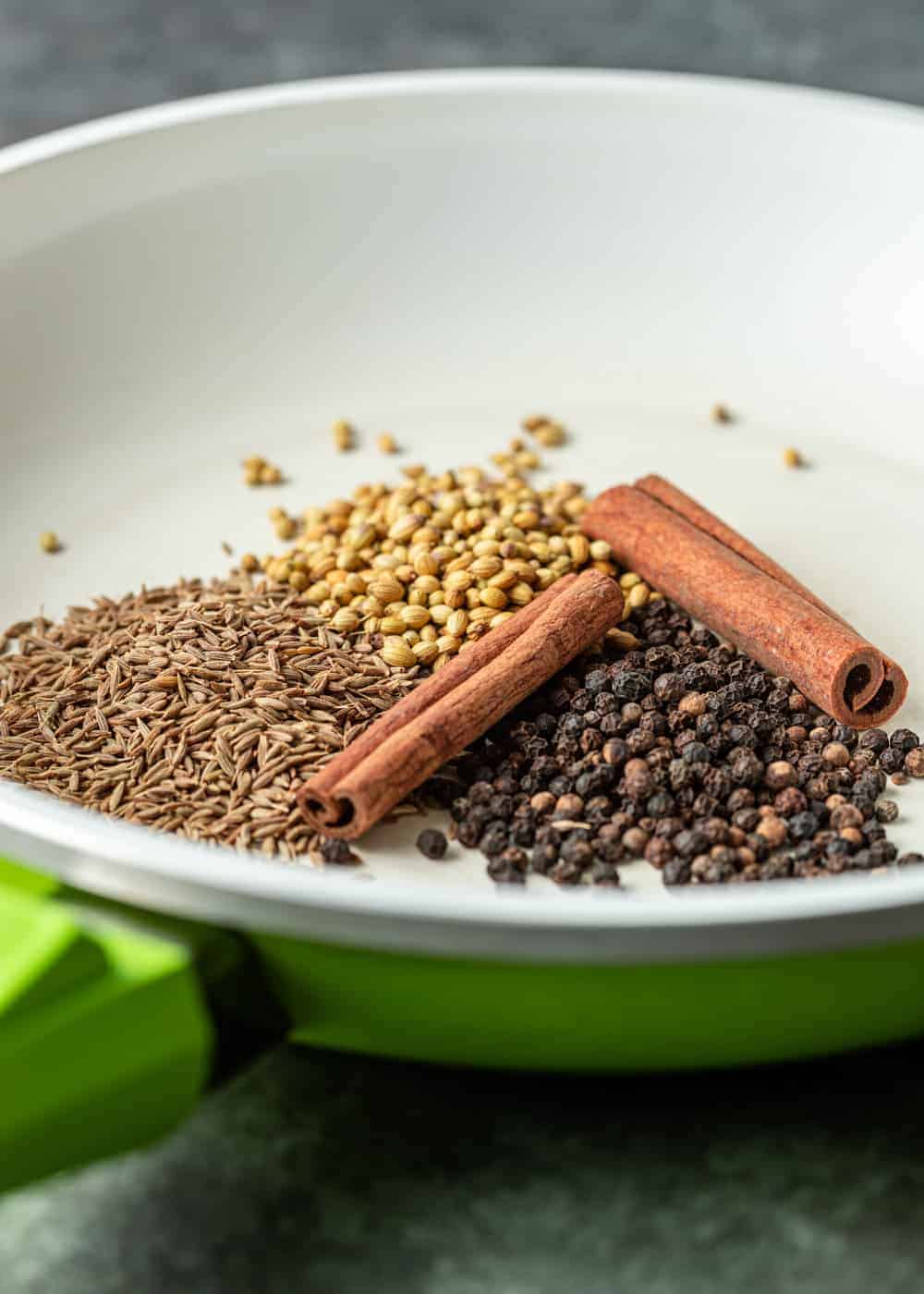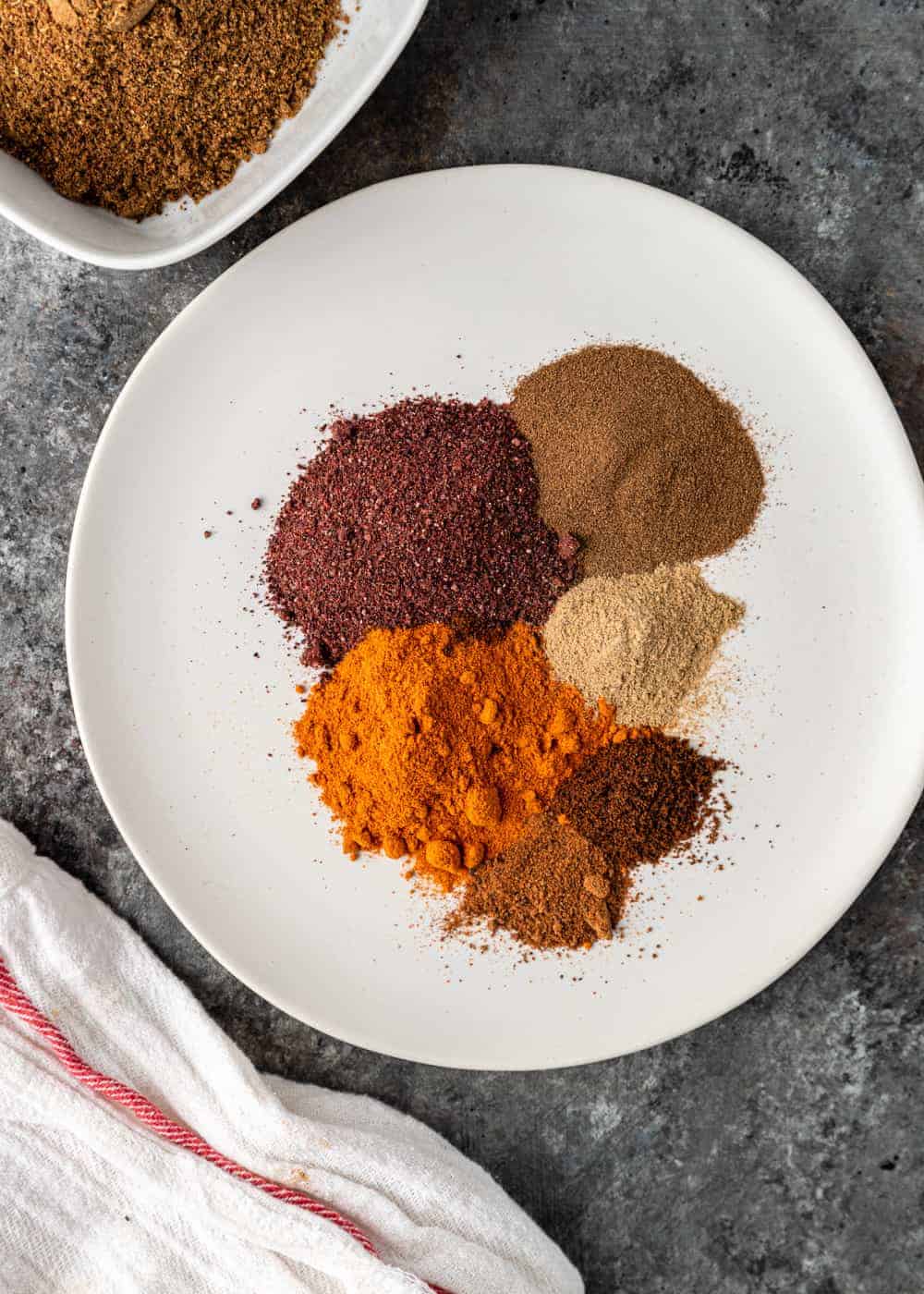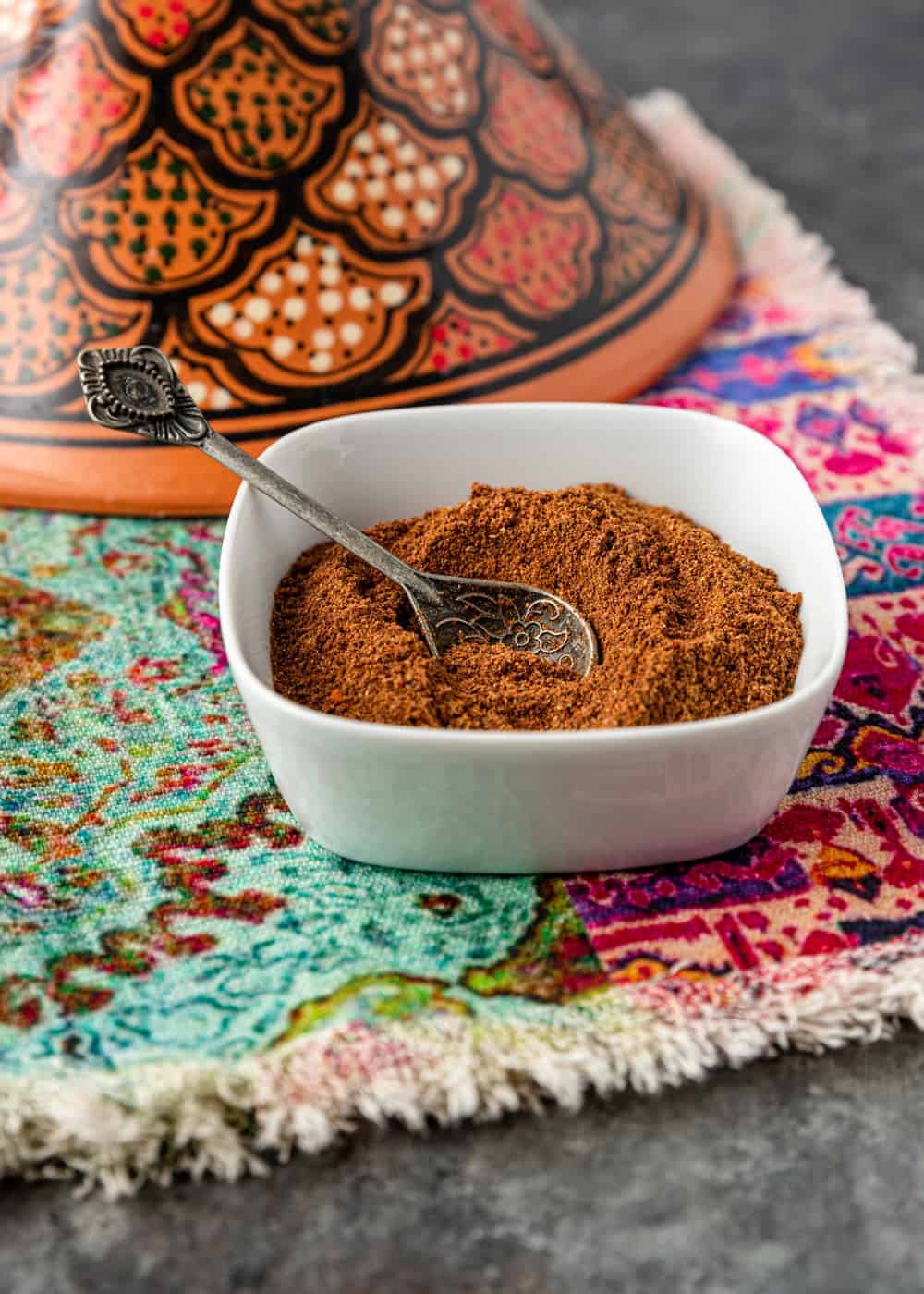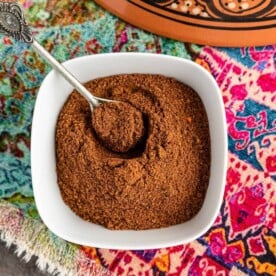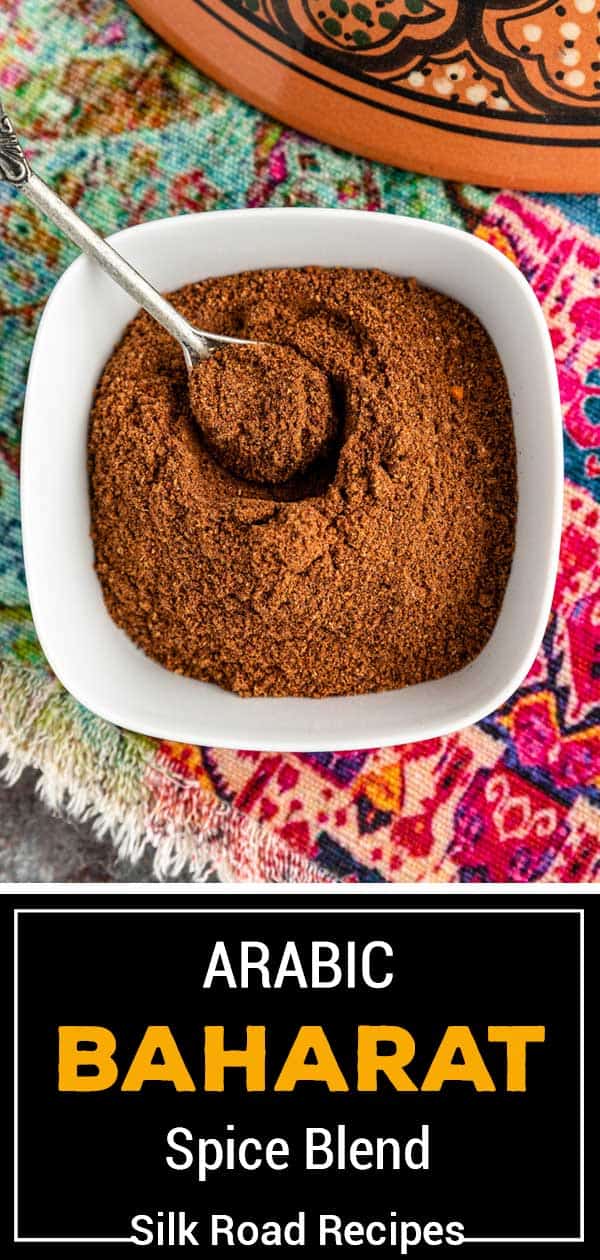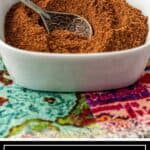published Apr 24, 2023, updated Feb 26, 2024 I always get so excited when I get to share recipes like today’s Arabic recipe for baharat spice. When you master the art of making your own Spice Blends, it opens up a whole other world of culinary possibilities! This baharat spice blend comes to us from the rich culinary tradition of the Middle East. A mainstay in Middle Eastern spice cabinets, this warming, enticing spice blend is surprisingly versatile. Baharat spice is used to season all varieties of meats, rice dishes, vegetables, and other foods. I’ve included a helpful list of more detailed suggestions later in the post. Feeling inspired? For more easy yet exotic spice blends, check out my posts for Persian Advieh, Garam Masala, Chinese Five Spice, and Vindaloo Curry Powder.
What is baharat spice?
This all purpose seasoning mix is a combination of warm and earthy spices that add sweet and smoky flavors, with just a bit of heat. Baharat is the Arabic word for “spice”, so it goes without saying that the blend can vary quite a bit from region to region. Just as garam masala is a staple in Indian cuisine, baharat is used in many Middle Eastern dishes. The ingredients can vary, but nearly every version include black peppercorns. Another common blend of spices, ras el hanout has several additional ingredients that make it more fragrant and slightly sweeter in flavor. And although Lebanese zaatar comes from the same general region, it has a completely different base of ingredients. The flavors are nuttier and tangy, and it is most often found in dips or breads.
Recipe notes
Cinnamon – Adds sweet, warming, and woodsy elements to mix. I prefer sticks, but ground cinnamon will work. Refer to the recipe card below for conversions. Black Pepper – Peppercorns bring a sharp, hot flavor blended with hints of citrus and pine. Ground black pepper is a fine substitute for whole peppercorns. Cumin – This superstar spice offers savory, earthy, and aromatic tones with just the right amount of smoky warmth. Cumin seeds or ground will work. Coriander – Coriander is light, sweet, citrusy, and floral. Once toasted, the flavor takes on a nutty element as well. You can use coriander seeds or the ground version. Sumac – This unique spice is tart, tangy, fruity and floral. Check the international aisle at the supermarket, a Middle Eastern market, or shop online. A tiny bit of lemon zest can work in its place, although it won’t be quite the same. Sweet Paprika – Made from ripe, sweet red peppers, sweet paprika is slightly fruity and sweet with just the right touch of peppery heat. Allspice – This dynamic, multidimensional spice gives us hints of fennel, star anise, nutmeg, cloves, black pepper, and cinnamon all from one amazing plant. Cardamom – Another complex flavor profile featuring piney, fruity, and minty elements. Cloves – Supremely aromatic and warming spice with hints of sweetness, astringency and bitterness. Nutmeg – Warm, earthy, and slightly sweet with the slightest whisper of citrus and cloves.
Love this recipe? Share it with the world on Pinterest.
